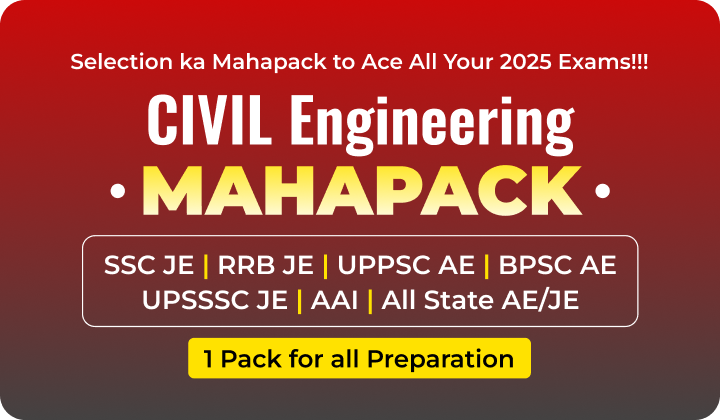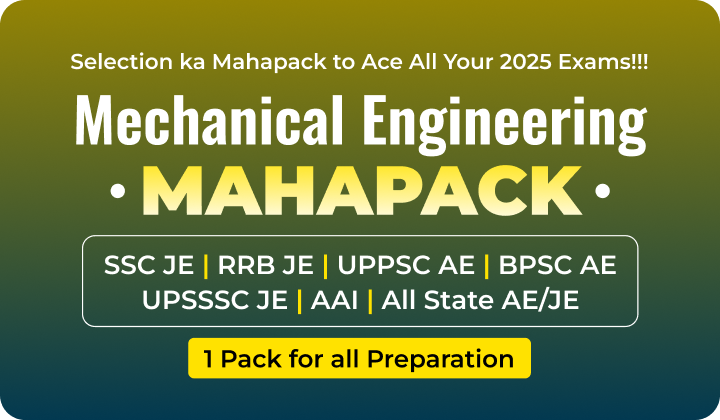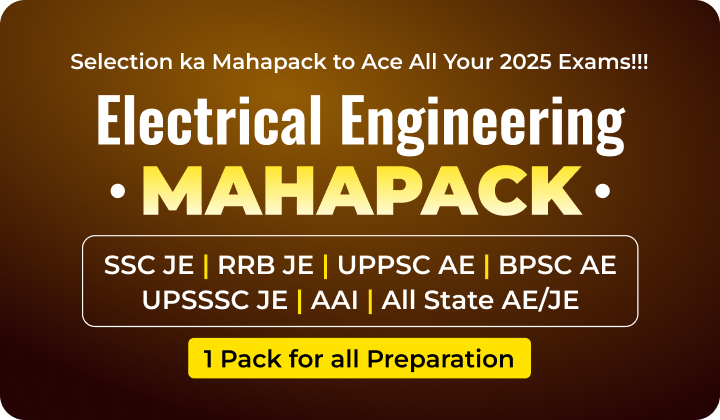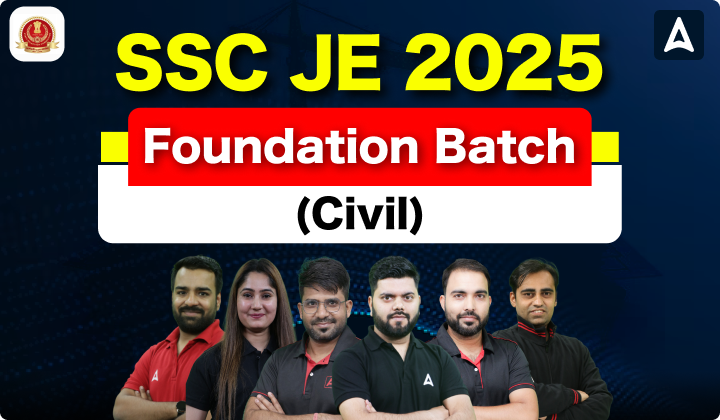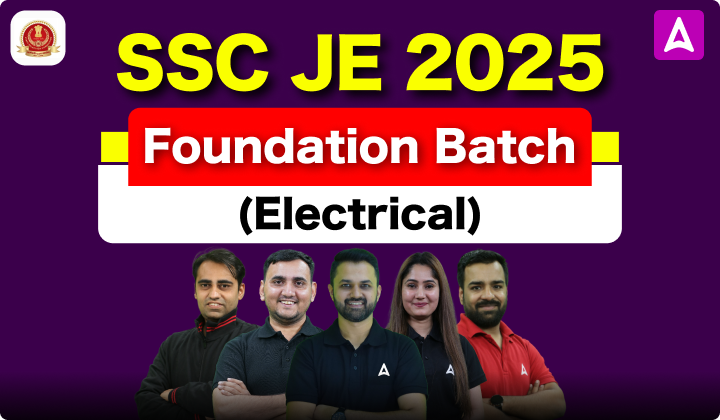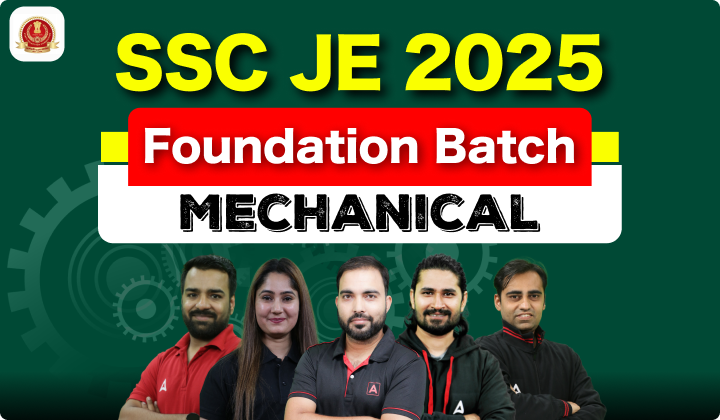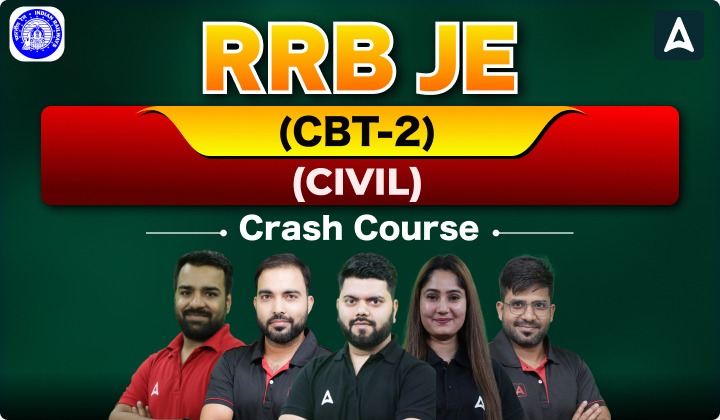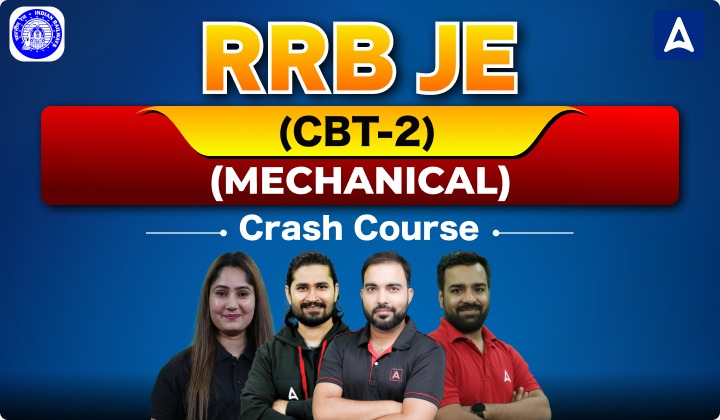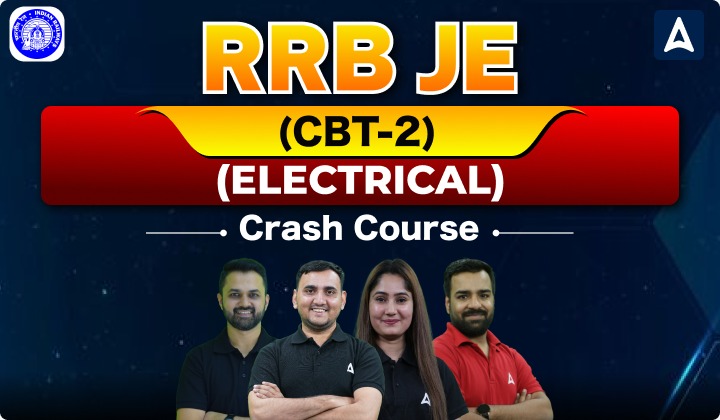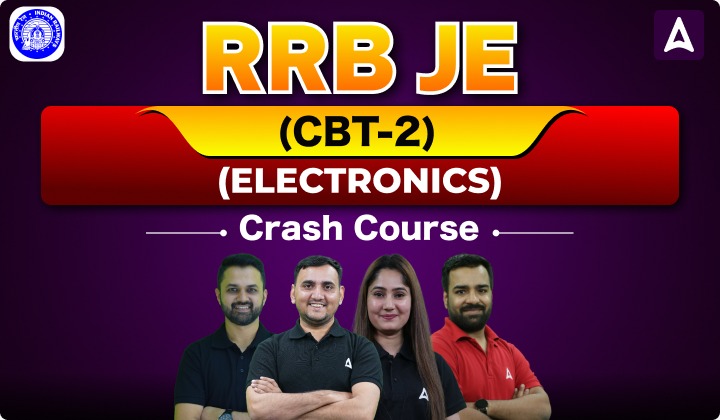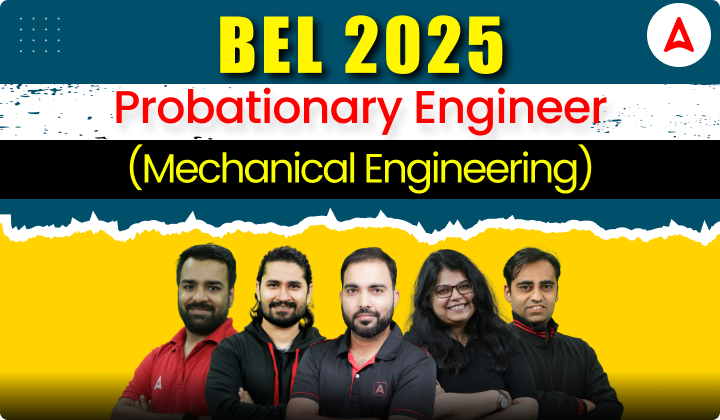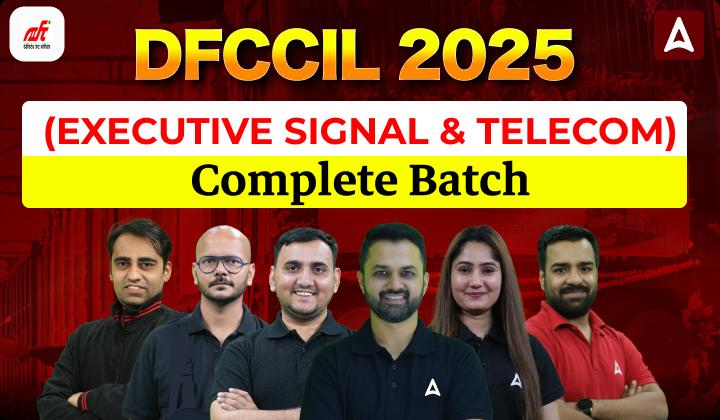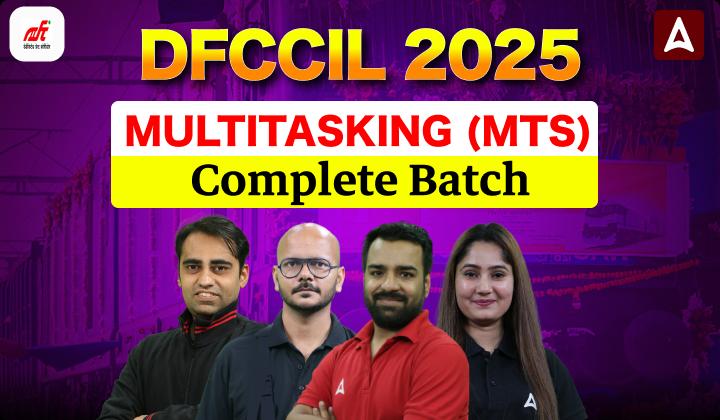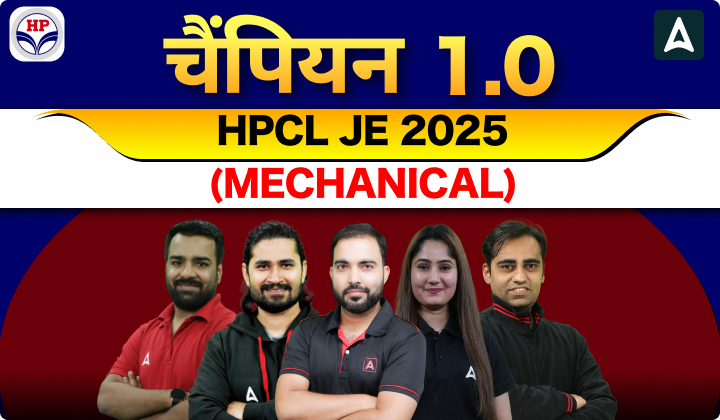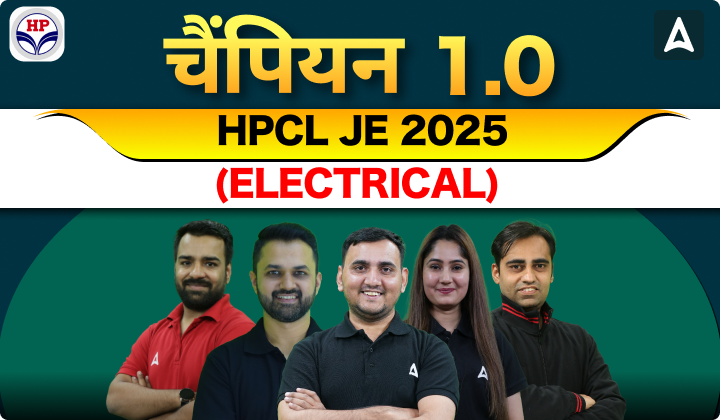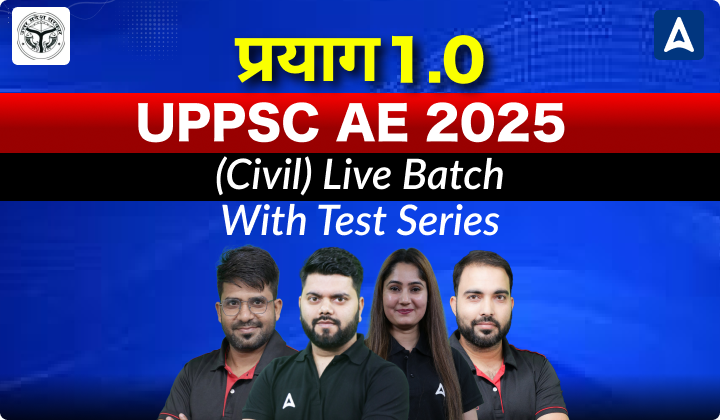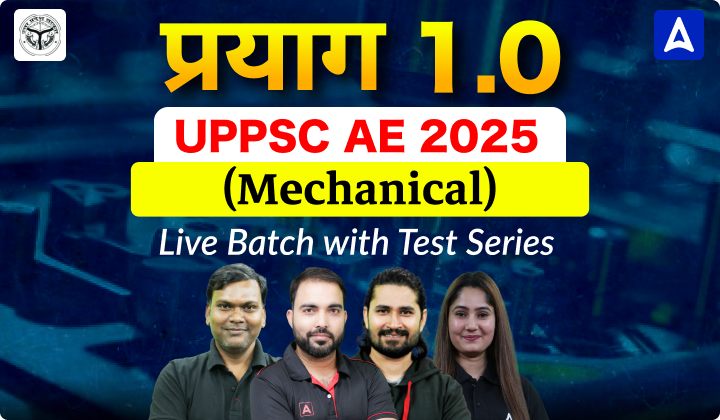Table of Contents
ISRO Exam Syllabus 2022
Indian Space Research Organization (ISRO) is one of the biggest organization who recruits Scientists/Engineer on regular basis. This year also ISRO is going to recruit on a large scale. Candidates are waiting for ISRO Recruitment 2022 Notification for a long time. As the notification has not came yet, Still interested candidates are giving their heart and soul for this prestigious exam. We as a team has found this opportunity to help the candidates in their preparation so they can fetch good marks and secure a seat in the upcoming ISRO Scientist Recruitment 2022. To ace the ISRO Exam 2022, Candidates needs to understand the ISRO Exam Pattern 2022 and ISRO Exam Syllabus 2022 in detailed manner as we have thoroughly discussed the Exam Pattern and Syllabus of ISRO Scientist Exam 2022 in this article. Candidates must also bookmark this website for further engineering updates.
Now keep yourself updated with Latest Engineering Government Jobs 24×7 Download ADDA247 App Now! CLICK HERE
ISRO Exam Syllabus 2022: Overview
| ISRO Recruitment 2022 | |
| Name Of the Organization | Indian Space Research Organization (ISRO) |
| Name Of the Exam | Scientist Engineer |
| Mode of Exam | Online Based |
| Total Number of Vacancies | Will be Notified Soon |
| Mode of Application | Online |
| Job Category | Engineering Jobs |
| Official Website | www.isro.gov.in |
ISRO Exam Syllabus 2022: Exam Pattern
Candidates are waiting for ISRO Recruitment 2022 very profoundly. Thus, to prepare the candidates and to help them to achieve their dream job opportunity we are discussing the ISRO Exam Pattern 2022 and ISRO Exam Syllabus 2022 in a detailed manner. It will boost their confidence in a right manner. The ISRO Scientist Engineer Exam Pattern 2022 has been discussed below:
The written test for ISRO Recruitment 2022 is qualifying in nature and its marks won’t be calculated to prepare the final ISRO Recruitment 2022 merit list.
| Phases | ISRO Recruitment 2022 Events | Total No. of questions | Time Duration |
| I | Written Test (Computer Science Engineering) | 80 | 1 Hour 30 Minutes |
| II | Interview | Not Disclosed | Not Disclosed |
- The ISRO Recruitment 2022 Exam comprises a sum of 80 objective-type questions, conveying equivalent marks in the exam.
- The total time duration of the ISRO Recruitment 2022 Exam is 1 hour 30 minutes.
- The negative marks of 1/3 marks will be deducted for wrong answers.
ISRO Exam Syllabus 2022: Detailed Syllabus
In this section, we have discussed the detailed syllabus of ISRO Recruitment 2022 whose notification is going to be released anytime soon. The ISRO Exam Syllabus 2022 comprises of detailed syllabus of five different branches.
- Mechanical Engineering
- Civil Engineering
- Electrical Engineering
- Electronics and Telecommunication Engineering
- Computer Science Engineering
To know more about the detailed ISRO Exam Syllabus 2022 of the above mentioned branches, Candidates must go through the article and bookmark this website for more ISRO Recruitment 2022 updates.
ISRO Exam Syllabus for Mechanical Engineering
Applied Mechanics and Design
Engineering Mechanics: Free-body diagrams and equilibrium; friction and its applications including rolling friction, belt-pulley, brakes, clutches, screw jack, wedge, vehicles, etc.; trusses and frames; virtual work; kinematics and dynamics of rigid bodies in plane motion; impulse and momentum (linear and angular) and energy formulations; Lagrange’s equation.
Mechanics of Materials: Stress and strain, elastic constants, Poisson’s ratio; Mohr’s circle for plane stress and plane strain; thin cylinders; shear force and bending moment diagrams; bending and shear stresses; the concept of shear center; deflection of beams; torsion of circular shafts; Euler’s theory of columns; energy methods; thermal stresses; strain gauges and rosettes; testing of materials with the universal testing machine; testing of hardness and impact strength.
Theory of Machines: Displacement, velocity, and acceleration analysis of plane mechanisms; dynamic analysis of linkages; cams; gears and gear trains; flywheels and governors; balancing of reciprocating and rotating masses; gyroscope.
Vibrations: Free and forced vibration of single degree of freedom systems, the effect of damping; vibration isolation; resonance; critical speeds of shafts.
Machine Design: Design for static and dynamic loading; failure theories; fatigue strength and the S- N diagram; principles of the design of machine elements such as bolted, riveted, and welded joints; shafts, gears, rolling and sliding contact bearings, brakes, and clutches, springs.
Fluid Mechanics and Thermal Sciences
Fluid Mechanics: Fluid properties; fluid statics, forces on submerged bodies, stability of floating bodies; control-volume analysis of mass, momentum and energy; fluid acceleration; differential equations of continuity and momentum; Bernoulli’s equation; dimensional analysis; the viscous flow of incompressible fluids, boundary layer, elementary turbulent flow, flow through pipes, head losses in pipes, bends, and fittings; basics of compressible fluid flow.
Heat-Transfer: Modes of heat transfer; one-dimensional heat conduction, resistance concept and electrical analogy, heat transfer through fins; unsteady heat conduction, lumped parameter system, Heisler’s charts; thermal boundary layer, dimensionless parameters in free and forced convective heat transfer, heat transfer correlations for flow over flat plates and through pipes, the effect of turbulence; heat exchanger performance, LMTD and NTU methods; radiative heat transfer, Stefan- Boltzmann law, Wien’s displacement law, black and grey surfaces, view factors, radiation network analysis
Thermodynamics: Thermodynamic systems and processes; properties of pure substances, the behavior of ideal and real gases; zeroth and first laws of thermodynamics, calculation of work and heat in various processes; second law of thermodynamics; thermodynamic property charts and tables, availability and irreversibility; thermodynamic relations.
Applications: Power Engineering: Air and gas compressors; vapor and gas power cycles, concepts of regeneration and reheat. I.C. Engines: Air-standard Otto, Diesel, and dual cycles. Refrigeration and air-conditioning: Vapor and gas refrigeration and heat pump cycles; properties of moist air, psychrometric chart, basic psychrometric processes. Turbomachinery: Impulse and reaction principles, velocity diagrams, Pelton-wheel, Francis and Kaplan turbines; steam and gas turbines.
Materials, Manufacturing and Industrial Engineering
Engineering Materials: Structure and properties of engineering materials, phase diagrams, heat treatment, stress-strain diagrams for engineering materials.
Casting, Forming, and Joining Processes: Different types of castings, design of patterns, molds and cores; solidification and cooling; riser and gating design. Plastic deformation and yield criteria; fundamentals of hot and cold working processes; load estimation for bulk (forging, rolling, extrusion, drawing) and sheet (shearing, deep drawing, bending) metal forming processes; principles of powder metallurgy. Principles of welding, brazing, soldering and adhesive bonding.
Machining and Machine Tool Operations: Mechanics of machining; basic machine tools; single and multi-point cutting tools, tool geometry and materials, tool life and wear; economics of machining; principles of non-traditional machining processes; principles of work holding, jigs and fixtures; abrasive machining processes; NC/CNC machines and CNC programming.
Metrology and Inspection: Limits, fits and tolerances; linear and angular measurements; comparators; interferometry; form and finish measurement; alignment and testing methods; tolerance analysis in manufacturing and assembly; concepts of coordinate-measuring machine (CMM).
Computer Integrated Manufacturing: Basic concepts of CAD/CAM and their integration tools; additive manufacturing.
Production Planning and Control: Forecasting models, aggregate production planning, scheduling, materials requirement planning; lean manufacturing.
Inventory Control: Deterministic models; safety stock inventory control systems.
Operations Research: Linear programming, simplex method, transportation, assignment, network flow models, simple queuing models, PERT and CPM.
ISRO Exam Syllabus 2022 for Civil Engineering
Structural Engineering
Engineering Mechanics: System of forces, free-body diagrams, equilibrium equations; Internal forces in structures; Frictions and its applications; Centre of mass; Free Vibrations of undamped SDOF system.
Solid Mechanics: Bending moment and shear force in statically determinate beams; Simple stress and strain relationships; Simple bending theory, flexural and shear stresses, shear centre; Uniform torsion, Transformation of stress; buckling of column, combined and direct bending stresses.
Structural Analysis: Statically determinate and indeterminate structures by force/ energy methods; Method of superposition; Analysis of trusses, arches, beams, cables and frames; Displacement methods: Slope deflection and moment distribution methods; Influence lines; Stiffness and flexibility methods of structural analysis.
Construction Materials and Management: Construction Materials: Structural Steel – Composition, material properties and behaviour; Concrete – Constituents, mix design, short-term and long-term properties. Construction Management: Types of construction projects; Project planning and network analysis – PERT and CPM; Cost estimation.
Concrete Structures: Working stress and Limit state design concepts; Design of beams, slabs, columns; Bond and development length; Prestressed concrete beams.
Steel Structures: Working stress and Limit state design concepts; Design of tension and compression members, beams and beam- columns, column bases; Connections – simple and eccentric, beam-column connections, plate girders and trusses; Concept of plastic analysis -beams and frames.
Geotechnical Engineering
Soil Mechanics: Three-phase system and phase relationships, index properties; Unified and Indian standard soil classification system; Permeability – one dimensional flow, Seepage through soils – two – dimensional flow, flow nets, uplift pressure, piping, capillarity, seepage force; Principle of effective stress and quicksand condition; Compaction of soils; One- dimensional consolidation, time rate of consolidation; Shear Strength, Mohr’s circle, effective and total shear strength parameters, Stress-Strain characteristics of clays and sand; Stress paths.
Foundation Engineering: Sub-surface investigations – Drilling bore holes, sampling, plate load test, standard penetration and cone penetration tests; Earth pressure theories – Rankine and Coulomb; Stability of slopes – Finite and infinite slopes, Bishop’s method; Stress distribution in soils – Boussinesq’s theory; Pressure bulbs, Shallow foundations – Terzaghi’s and Meyerhoff’s bearing capacity theories, effect of water table; Combined footing and raft foundation; Contact pressure; Settlement analysis in sands and clays; Deep foundations – dynamic and static formulae, Axial load capacity of piles in sands and clays, pile load test, pile under lateral loading, pile group efficiency, negative skin friction.
Water Resources Engineering
Fluid Mechanics: Properties of fluids, fluid statics; Continuity, momentum and energy equations and their applications; Potential flow, Laminar and turbulent flow; Flow in pipes, pipe networks; Concept of boundary layer and its growth; Concept of lift and drag.
Hydraulics: Forces on immersed bodies; Flow measurement in channels and pipes; Dimensional analysis and hydraulic similitude; Channel Hydraulics – Energy-depth relationships, specific energy, critical flow, hydraulic jump, uniform flow, gradually varied flow and water surface profiles.
Hydrology: Hydrologic cycle, precipitation, evaporation, evapo-transpiration, watershed, infiltration, unit hydrographs, hydrograph analysis, reservoir capacity, flood estimation and routing, surface run- off models, ground water hydrology – steady state well hydraulics and aquifers; Application of Darcy’s Law.
Irrigation: Types of irrigation systems and methods; Crop water requirements – Duty, delta, evapo- transpiration; Gravity Dams and Spillways; Lined and unlined canals, Design of weirs on permeable foundation; cross drainage structures.
Environmental Engineering
Water and Waste Water Quality and Treatment: Basics of water quality standards – Physical, chemical and biological parameters; Water quality index; Unit processes and operations; Water requirement; Water distribution system; Drinking water treatment.
Sewerage system design, quantity of domestic wastewater, primary and secondary treatment. Effluent discharge standards; Sludge disposal; Reuse of treated sewage for different applications.
Air Pollution: Types of pollutants, their sources and impacts, air pollution control, air quality standards, Air quality Index and limits.
Municipal Solid Wastes: Characteristics, generation, collection and transportation of solid wastes, engineered systems for solid waste management (reuse/ recycle, energy recovery, treatment and disposal).
Transportation Engineering
Transportation Infrastructure: Geometric design of highways – cross-sectional elements, sight distances, horizontal and vertical alignments.
Geometric design of railway Track – Speed and Cant.
Concept of airport runway length, calculations and corrections; taxiway and exit taxiway design.
Highway Pavements: Highway materials – desirable properties and tests; Desirable properties of bituminous paving mixes; Design factors for flexible and rigid pavements; Design of flexible and rigid pavement using IRC codes
Traffic Engineering: Traffic studies on flow and speed, peak hour factor, accident study, statistical analysis of traffic data; Microscopic and macroscopic parameters of traffic flow, fundamental relationships; Traffic signs; Signal design by Webster’s method; Types of intersections; Highway capacity.
Geomatics Engineering
Principles of surveying: Errors and their adjustment; Maps – scale, coordinate system; Distance and angle measurement – Levelling and trigonometric levelling; Traversing and triangulation survey; Total station; Horizontal and vertical curves.
Photogrammetry and Remote Sensing: Scale, flying height; Basics of remote sensing and GIS.
ISRO Exam Syllabus 2022 for Electrical Engineering
Electric circuits
Network elements: ideal voltage and current sources, dependent sources, R, L, C, M elements.
Network solution methods: KCL, KVL, Node and Mesh analysis; Network Theorems: Thevenin’s, Norton’s, Superposition and Maximum Power Transfer theorem; Transient response of dc and ac networks, sinusoidal steady-state analysis, resonance, two port networks, balanced three phase circuits, star-delta transformation, complex power and power factor in ac circuits.
Electromagnetic Fields
Coulomb’s Law, Electric Field Intensity, Electric Flux Density, Gauss’s Law, Divergence, Electric field and potential due to point, line, plane and spherical charge distributions, Effect of dielectric medium, Capacitance of simple configurations, Biot-Savart’s law, Ampere’s law,Curl, Faraday’s law, Lorentz force, Inductance, Magnetomotive force, Reluctance, Magnetic circuits, Self and Mutual inductance of simple configurations.
Signals and Systems
Representation of continuous and discrete time signals, shifting and scaling properties, linear time invariant and causal systems, Fourier series representation of continuous and discrete time periodic signals, sampling theorem, Applications of Fourier Transform for continuous and discrete time signals, Laplace Transform and Z transform. R.M.S. value, average value calculation for any general periodic waveform
Electrical Machines
Single phase transformer: equivalent circuit, phasor diagram, open circuit and short circuit tests, regulation and efficiency; Three-phase transformers: connections, vector groups, parallel operation; Auto-transformer, Electromechanical energy conversion principles; DC machines: separately excited, series and shunt, motoring and generating mode of operation and their characteristics, speed control of dc motors; Three-phase induction machines: principle of operation, types, performance, torque-speed characteristics, no-load and blocked-rotor tests, equivalent circuit, starting and speed control; Operating principle of single-phase induction motors; Synchronous machines: cylindrical and salient pole machines, performance and characteristics, regulation and parallel operation of generators, starting of synchronous motors; Types of losses and efficiency calculations of electric machines
Power Systems
Basic concepts of electrical power generation, ac and dc transmission concepts, Models and performance of transmission lines and cables, Economic Load Dispatch (with and without considering transmission losses), Series and shunt compensation, Electric field distribution and insulators, Distribution systems, Per-unit quantities, Bus admittance matrix, Gauss- Seidel and Newton-Raphson load flow methods, Voltage and Frequency control, Power factor correction, Symmetrical components, Symmetrical and unsymmetrical fault analysis, Principles of over-current, differential, directional and distance protection; Circuit breakers, System stability concepts, Equal area criterion.
Control Systems
Mathematical modeling and representation of systems, Feedback principle, transfer function, Block diagrams and Signal flow graphs, Transient and Steady-state analysis of linear time invariant systems, Stability analysis using Routh-Hurwitz and Nyquist criteria, Bode plots, Root loci, Lag, Lead and Lead-Lag compensators; P, PI and PID controllers; State space model, Solution of state equations of LTI systems
Electrical and Electronic Measurements
Bridges and Potentiometers, Measurement of voltage, current, power, energy and power factor; Instrument transformers, Digital voltmeters and multimeters, Phase, Time and Frequency measurement; Oscilloscopes, Error analysis.
Analog and Digital Electronics
Simple diode circuits: clipping, clamping, rectifiers; Amplifiers: biasing, equivalent circuit and frequency response; oscillators and feedback amplifiers; operational amplifiers: characteristics and applications; single stage active filters, Active Filters: Sallen Key, Butterwoth, VCOs and timers, combinatorial and sequential logic circuits, multiplexers, demultiplexers, Schmitt triggers, sample and hold circuits, A/D and D/A converters.
Power Electronics
Static V-I characteristics and firing/gating circuits for Thyristor, MOSFET, IGBT; DC to DC conversion: Buck, Boost and Buck-Boost Converters; Single and three-phase configuration of uncontrolled rectifiers; Voltage and Current commutated Thyristor based converters; Bidirectional ac to dc voltage source converters; Magnitude and Phase of line current harmonics for uncontrolled and thyristor-based converters; Power factor and Distortion Factor of ac to dc converters; Single-phase and three-phase voltage and current source inverters, sinusoidal pulse width modulation.
ISRO Exam Syllabus 2022 for Electronics and Telecommunication
Networks, Signals and Systems
Circuit analysis: Node and mesh analysis, superposition, Thevenin’s theorem, Norton’s theorem, reciprocity. Sinusoidal steady state analysis: phasors, complex power, maximum power transfer. Time and frequency domain analysis of linear circuits: RL, RC and RLC circuits, solution of network equations using Laplace transform. Linear 2-port network parameters, wye-delta transformation.
Continuous-time signals: Fourier series and Fourier transform, sampling theorem and applications.
Discrete-time signals: DTFT, DFT, z-transform, discrete-time processing of continuous-time signals. LTI systems: definition and properties, causality, stability, impulse response, convolution, poles and zeroes, frequency response, group delay, phase delay.
Electronic Devices
Energy bands in intrinsic and extrinsic semiconductors, equilibrium carrier concentration, direct and indirect band-gap semiconductors.
Carrier transport: diffusion current, drift current, mobility and resistivity, generation and recombination of carriers, Poisson and continuity equations.
P-N junction, Zener diode, BJT, MOS capacitor, MOSFET, LED, photo diode and solar cell.
Analog Circuits
Diode circuits: clipping, clamping and rectifiers.
BJT and MOSFET amplifiers: biasing, ac coupling, small signal analysis, frequency response. Current mirrors and differential amplifiers.
Op-amp circuits: Amplifiers, summers, differentiators, integrators, active filters, Schmitt triggers and oscillators.
Digital Circuits
Number representations: binary, integer and floating-point- numbers. Combinatorial circuits: Boolean algebra, minimization of functions using Boolean identities and Karnaugh map, logic gates and their static CMOS implementations, arithmetic circuits, code converters, multiplexers, decoders.
Sequential circuits: latches and flip-flops, counters, shift-registers, finite state machines, propagation delay, setup and hold time, critical path delay.
Data converters: sample and hold circuits, ADCs and DACs.
Semiconductor memories: ROM, SRAM, DRAM.
Computer organization: Machine instructions and addressing modes, ALU, data-path and control unit, instruction pipelining.
Control Systems
Basic control system components: Feedback principle; Transfer function; Block diagram representation; Signal flow graph; Transient and steady-state analysis of LTI systems; Frequency response; Routh-Hurwitz and Nyquist stability criteria; Bode and root-locus plots; Lag, lead and lag- lead compensation; State variable model and solution of state equation of LTI systems.
Communications
Random processes: autocorrelation and power spectral density, properties of white noise, filtering of random signals through LTI systems.
Analog communications: amplitude modulation and demodulation, angle modulation and demodulation, spectra of AM and FM, super heterodyne receivers.
Information theory: entropy, mutual information and channel capacity theorem.
Digital communications: PCM, DPCM, digital modulation schemes (ASK, PSK, FSK, QAM), bandwidth, inter-symbol interference, MAP, ML detection, matched filter receiver, SNR and BER.
Fundamentals of error correction, Hamming codes, CRC.
Electromagnetics
Maxwell’s equations: differential and integral forms and their interpretation, boundary conditions, wave equation, Poynting vector.
Plane waves and properties: reflection and refraction, polarization, phase and group velocity, propagation through various media, skin depth.
Transmission lines: equations, characteristic impedance, impedance matching, impedance transformation, S-parameters, Smith chart.
Rectangular and circular waveguides, light propagation in optical fibers, dipole and monopole antennas, linear antenna arrays.
ISRO Exam Syllabus 2022 for Computer Science Engineering
Digital Logic
Boolean algebra. Combinational and sequential circuits. Minimization. Number representations and computer arithmetic (fixed and floating point).
Computer Organization and Architecture
Machine instructions and addressing modes. ALU, data-path and control unit. Instruction pipelining, pipeline hazards. Memory hierarchy: cache, main memory and secondary storage; I/O interface (interrupt and DMA mode).
Programming and Data Structures
Programming in C. Recursion. Arrays, stacks, queues, linked lists, trees, binary search trees, binary heaps, graphs.
Algorithms
Searching, sorting, hashing. Asymptotic worst case time and space complexity. Algorithm design techniques: greedy, dynamic programming and divide-and-conquer. Graph traversals, minimum spanning trees, shortest paths
Theory of Computation
Regular expressions and finite automata. Context-free grammars and push-down automata. Regular and contex-free languages, pumping lemma. Turing machines and undecidability.
Compiler Design
Lexical analysis, parsing, syntax-directed translation. Runtime environments. Intermediate code generation. Local optimisation, Data flow analyses: constant propagation, liveness analysis, common subexpression elimination.
Operating System
System calls, processes, threads, inter-process communication, concurrency and synchronization. Deadlock. CPU and I/O scheduling. Memory management and virtual memory. File systems.
Databases
ER-model. Relational model: relational algebra, tuple calculus, SQL. Integrity constraints, normal forms. File organization, indexing (e.g., B and B+ trees). Transactions and concurrency control.
Computer Networks
Concept of layering: OSI and TCP/IP Protocol Stacks; Basics of packet, circuit and virtual circuit- switching; Data link layer: framing, error detection, Medium Access Control, Ethernet bridging; Routing protocols: shortest path, flooding, distance vector and link state routing; Fragmentation and IP addressing, IPv4, CIDR notation, Basics of IP support protocols (ARP, DHCP, ICMP), Network Address Translation (NAT); Transport layer: flow control and congestion control, UDP, TCP, sockets; Application layer protocols: DNS, SMTP, HTTP, FTP, Email.
ISRO Exam Syllabus 2022: FAQs
Q1. When will ISRO is going to publish the ISRO Recruitment 2022 Notification?
Ans: ISRO Recruitment 2022 Notification is around the corner. Candidates must visit this website for more updates regarding ISRO Recruitment 2022.
Q2. Based on ISRO Previous Year Papers, Can we say that the Syllabus of ISRO Scientist Exam is same as GATE?
Ans: There is no profound or authentic syllabus for ISRO Scientist Exam. But based on previous papers we can say that the exam is somehow as equal to the GATE level. Hence, the syllabus is somehow same for both the exams.
Q3. Is there any negative marking in ISRO Recruitment 2022 Exam?
Ans: Yes. There is negative marking of one-third in ISRO Recruitment 2022 Exam.
Q4. What is the expected date of ISRO Recruitment 2022 Exam?
Ans: There is no official data about the ISRO Recruitment 2022 Exam Date but we are requesting candidates to bookmark our website for ISRO Recruitment 2022 exam and more engineering updates.


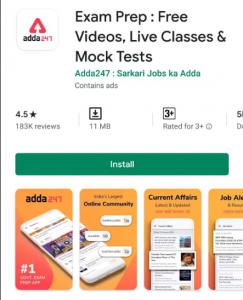

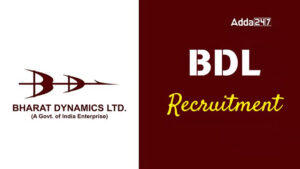 BDL Exam Date 2025 Out, Check Schedule f...
BDL Exam Date 2025 Out, Check Schedule f...
 BDL Management Trainee Answer Key 2025 O...
BDL Management Trainee Answer Key 2025 O...
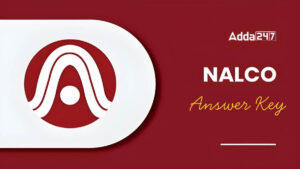 NALCO Answer Key 2025 Out at nalcoindia....
NALCO Answer Key 2025 Out at nalcoindia....

